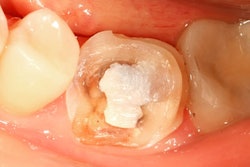
Later this month, I will turn 63. I am a husband, a father, a brother, and an uncle. I served as an officer in the South African army. I am president of Operation Savannah, a faith-based recovery ministry. I have also committed seven years of my life to the U.S. Environmental Protection Agency (EPA) amalgam rule, including my work with Stephanie Smiles, a program that offers a free software platform for electronic record-keeping.
You'd think that by now I would have learned not to try to tell anyone what to do. Specifically, that includes trying not to tell dental offices battling the effects of COVID-19 what to do about a federal regulation they would rather did not exist. And I'm not only doing that in this article but also informing you of what happens if you do not comply.
 Alexander Bischoff.
Alexander Bischoff.The deadline for submission of your one-time compliance report to the control authority in terms of the EPA rule (40 CFR Part 441) is October 12, 2020. Dental offices need to know who their control authority is to get the correct one-time compliance report and who to send it to/where to send it. If you need help identifying or locating your control authority, contact us at Stephanie Smiles.
Simply put, if you do not submit your one-time compliance report by October 12, you are in violation of the EPA amalgam rule. More importantly, you are in violation of a federal pretreatment program and subject to the enforcement provisions of Section 309 of the Clean Water Act (as a note, Section 309 is seven pages of legalese that contains some real teeth to it). Sooner or later (there is no time limit), your control authority will produce a report of all dental offices in its territory that do not have a one-time compliance report on file. At that point, you will have been caught without the proper paperwork submitted.
It really is up to the control authority (federal, state, or local) as to if, when, and how it might enforce the EPA amalgam rule. Three years, the required time for keeping records, gives it plenty of time to pounce.
I have spoken to a number of control authorities to get a sense of their plans for enforcement. They certainly vary across the country. At the highest level, I understand that the EPA considers enforcement a tool to achieve compliance, which could include a multimillion dollar fine to a state for failing to implement the rule effectively. A state could fine an approved pretreatment program for its failings, while a pretreatment program could inspect the dental offices in their territory.
I urge all dental offices to know what they are required to do to be in compliance, including the obvious requirement to submit their one-time compliance report. To follow the best management practices (BMPs), do inspections, recycle a container, dispose of amalgam mercury, and keep prescribed records. I strongly encourage everyone to pay attention to Section E of the one-time compliance report. It is a criminal offense to make a knowingly false federal declaration. Let me repeat: It's a criminal offense.
I wish all dental offices would comply in full because they hate the idea of mercury being discharged into the environment. However, I know there are times when finances are a bigger motivator. With that in mind, I urge every dental office to know the possible costs of failing to comply. One control authority might choose not to enforce and another might send a 30-day notice to comply, while others are permitted to go after your wallet. The starting fine can be as low as $100, while Section 309 has the amount of $2,500 per day with maximums. If your control authority determines that you have made a knowing false declaration, you could be liable for jail time and a fine not to exceed $25,000 per day of the offense. There is a difference between unintentional, knowingly, and knowingly false. Please remember that I am only the messenger. It is all in Section 309 of the Clean Water Act.
Compliance with this rule is actually quite easy. You have already installed your amalgam separator. The one-time compliance report must be done, but the weekly activities and record-keeping need to be followed more stringently. However, these are tasks that most offices are doing most the time.
There are some risks in life that are worth taking. There are other situations, like this one, where I believe it simply does not make sense to take the risk.
Alexander (Alex) Bischoff is president of Operation Savannah, a 501(c)(3) nonprofit that provides education to veterans and parents battling post-traumatic stress disorder. In 2014, Stephanie Smiles was formed with the mission of using the internet to educate and equip the dental industry, including to support dental offices in complying with the EPA amalgam rule.
The comments and observations expressed herein do not necessarily reflect the opinions of DrBicuspid.com, nor should they be construed as an endorsement or admonishment of any particular idea, vendor, or organization.



















